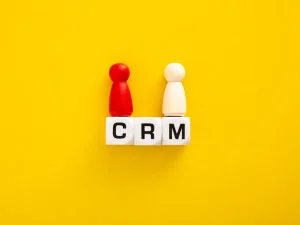Digital marketing has revolutionized the way businesses reach their target audience. With the rise of technology, consumers are now connected to multiple channels and platforms, making it essential for companies to adopt a multichannel marketing approach. But what exactly is multichannel marketing? And how can you leverage its power to drive business growth?
This blog post will delve into the multichannel marketing world and explore strategies and tips that can help your business thrive in today’s digital landscape. From identifying the right channels for your specific industry to creating cohesive branding across platforms, we’ll guide you through every step of the process.
So get ready to unlock new levels of success as we uncover the secrets behind effective multichannel marketing! Let’s dive in!
Understanding Multichannel Marketing and its Benefits
Consumers are constantly bombarded with information from various channels in today’s digital age. The options seem endless, from social media platforms to email newsletters and search engine results. This is where multichannel marketing comes into play.
Multichannel marketing refers to reaching your target audience through multiple channels simultaneously. Instead of relying on a single channel, businesses leverage different mediums to engage with their customers more meaningfully.
The benefits of multichannel marketing are undeniable. It allows you to expand your reach and connect with a wider audience. Being present on multiple platforms increases the chances of capturing the attention of potential customers who may have different preferences when it comes to consuming content.
Moreover, multichannel marketing enables you to build brand awareness and recognition across various touchpoints. Consistency in branding and messaging is key here – by maintaining a cohesive presence across all channels, you establish trust and credibility among your target audience.
Another advantage of multichannel marketing is its ability to enhance customer engagement and interaction. Different channels offer unique opportunities for customer interaction – through likes, comments, shares, or direct messages. You create a sense of community around your brand by actively engaging with your audience across these platforms.
Additionally, implementing multichannel strategies can lead to increased sales and revenue growth. When customers see consistent messaging about your products or services across different channels they frequent regularly (such as social media or email), they are more likely to make a purchase or take desired actions.
One major benefit that cannot be overlooked is the valuable insights gained from data analytics. With multiple channels, businesses can access a wealth of data on customer behavior patterns – such as browsing habits or preferred communication methods – which can inform future campaigns and optimization efforts.
Understanding the benefits of multichannel marketing strategies sets businesses up for success in today’s competitive landscape.
Identifying the Right Channels for Your Business
When it comes to multichannel marketing, one size does not fit all. Every business is unique and has different target audiences, goals, and resources. That’s why it’s crucial to identify the right channels to maximize your success.
Start by understanding your target audience. Who are they? Where do they spend their time online? By knowing who you’re trying to reach, you can determine which channels will most effectively reach them.
Next, consider your goals. Are you looking to increase brand awareness or drive sales? Different channels have different strengths and capabilities. For example, social media platforms like Facebook and Instagram are great for building brand awareness and engaging with customers, while email marketing may be more effective at driving conversions.
Evaluate your resources as well. Do you have a dedicated team for content creation or social media management? If so, leveraging platforms like YouTube or TikTok could be beneficial. But if you don’t have the capacity or expertise in-house, focusing on channels where you can effectively allocate resources is key.
Additionally, consider industry trends and competitor analysis when choosing your channels. Are there any emerging platforms that align with your target audience’s preferences? Keep an eye on what competitors are doing successfully – it might also give you some insights into which channels could work well for your business.
Identifying the right channels requires careful consideration of various factors such as target audience demographics/preferences and goals/resources available to execute campaigns effectively while keeping an eye on industry trends and competition strategies.
Creating Cohesive Branding and Messaging Across Channels
In today’s digital landscape, businesses must have a consistent and cohesive branding and messaging strategy across all marketing channels. This ensures that your brand identity remains strong and resonates with your target audience, regardless of where they encounter your brand.
One key aspect of creating a cohesive branding strategy is maintaining consistency in visual elements such as logos, colors, fonts, and imagery. Using the same design elements across all channels – from social media profiles to website banners – creates a recognizable brand image that helps customers remember you.
Another important factor in maintaining consistency is ensuring that your messaging aligns across different channels. Whether through social media posts, blog articles, or email newsletters, the tone and voice should be consistent with your brand personality. This helps build trust and familiarity with your audience.
Furthermore, consider adapting your content to suit each specific channel while staying true to your brand’s overall message. For example, on social media platforms like Twitter or Instagram, where character limits are restrictive, craft concise messages that convey the essence of your brand.
Developing guidelines for employees who handle customer interactions on various channels is also beneficial. Consistent training ensures everyone understands how to represent the company appropriately online while maintaining an aligned message.
By creating a cohesive branding strategy across multiple marketing channels – both online and offline – you establish yourself as a reliable presence in the market. Customers will recognize and resonate with your brand more easily if they consistently encounter familiar visuals and messaging throughout their journey with you.
Remember: building a strong foundation for consistent branding takes time but pays off by enabling long-term business growth!
Leveraging Data and Analytics for Effective Targeting
Data and analytics have become powerful tools in the world of multichannel marketing. By harnessing the insights gained from customer data, businesses can create targeted campaigns that resonate with their audience and drive success.
One of the first steps in leveraging data for effective targeting is collecting relevant customer information. This can include demographic details, browsing behavior, purchase history, and more. By analyzing this data, you can better understand who your customers are and what they want.
Once you have collected the necessary data, it’s important to use analytics tools to analyze and interpret it. These tools can help identify patterns, trends, and correlations that may take time to be apparent. With this knowledge, you can decide which channels to focus on and how to tailor your messaging.
Segmentation is another key aspect of effective targeting. By dividing your audience into smaller groups based on specific characteristics or behaviors, you can deliver personalized messages that speak directly to their needs or interests.
Testing is also crucial when leveraging data for targeting purposes. A/B testing allows you to compare different versions of a campaign or message to see which one performs better. This iterative approach helps refine your strategies over time for maximum impact.
By using data-driven insights effectively in multichannel marketing efforts, businesses stand a greater chance of reaching their target audience with relevant messages across various platforms.
Instead of relying on guesswork, digital marketers now have access to valuable information that guides decision-making.
Through segmentation, strategies, and constant testing, a business’ outreach has never been more efficient!
The Importance of Consistency in Campaigns
Consistency is key when it comes to running successful multichannel marketing campaigns. Why? Maintaining a consistent brand image and messaging across all channels helps build trust and recognition with your target audience.
When customers see the same branding elements, such as logos, colors, and taglines, on your website, social media profiles, and email newsletters, it reinforces their perception of your business as professional and reliable. Consistency also helps in creating a cohesive story that resonates with your audience.
Imagine seeing one version of a company’s logo on their website but then encountering a completely different logo on their social media platforms. It would create confusion and make you question the legitimacy of that business. This is why consistency matters!
Moreover, consistent messaging ensures you effectively communicate your value proposition across different channels. Your core message should remain the same regardless of whether someone discovers your brand through organic search results or paid advertising.
In addition to visual consistency and messaging alignment, it’s important to maintain consistency in terms of timing and frequency of content distribution. Regularly posting updates on social media or newsletters at predictable intervals keeps your brand top-of-mind for customers.
By prioritizing consistency in your multichannel marketing efforts, you can establish a strong and recognizable brand presence while effectively engaging with your target audience across various touchpoints. So remember: stay consistent to maximize campaign success!
Utilizing Automation for Efficiency and Personalization
In today’s fast-paced digital landscape, automation has become a crucial tool for businesses looking to maximize their marketing efforts. Companies can streamline operations, save time, and improve efficiency by automating certain tasks and processes.
One of the key benefits of automation is its ability to personalize marketing campaigns at scale. With automated tools and software, businesses can collect data on customer preferences and behaviors to deliver highly targeted content. This level of personalization not only helps increase engagement but also enhances the overall customer experience.
Automation also allows businesses to automate repetitive tasks such as email marketing, social media posting, lead nurturing, and more. Companies can ensure timely follow-ups with prospects or customers without manual intervention by setting up workflows and triggers based on specific actions or events.
Moreover, automation enables marketers to track campaign performance in real-time by providing insights into open rates, click-through rates, conversions, and revenue generated. These analytics help identify areas for improvement and optimize future campaigns for better results.
Another advantage of using automation is the ability to integrate different channels seamlessly. Whether email marketing software integrates with CRM systems or social media scheduling tools work alongside content management platforms; automation ensures a cohesive approach across various channels.
Furthermore, businesses can leverage automation technology to engage customers through personalized messages based on their behavior or purchase history. For example, pop-up notifications offering special discounts or abandoned cart emails reminding users about items left in their shopping carts are just some ways automated systems create personalized interactions.
To achieve success with utilizing automation, it is essential for businesses to continually monitor performance metrics, test new strategies, and refine existing workflows.
With regular analysis of data collected from automated processes, the effectiveness of campaigns can be measured, and adjustments made accordingly.
A/B testing, surveys, and customer feedback forms will allow you to gather valuable insights that inform your decision-making process.
Best Practices for Monitoring and Measuring Success
As with any marketing strategy, it is crucial to monitor and measure the success of your multichannel marketing efforts. This will allow you to make data-driven decisions and optimize your campaigns for better results. Here are some best practices to keep in mind:
1. Set clear goals and key performance indicators (KPIs): Before launching your multichannel campaigns, define what success looks like for your business. Establish specific goals and KPIs that align with your overall objectives.
2. Track relevant metrics: Depending on the channels you’re using, there are various metrics you can track to gauge the effectiveness of your campaigns. These may include website traffic, conversion, email open rates, social media engagement, or customer feedback.
3. Use analytics tools: Take advantage of analytics tools such as Google Analytics or social media insights to gather data about user behavior across different channels. These tools provide valuable insights into which channels drive the most traffic or conversions.
4. A/B testing: Experimentation is key in optimizing your multichannel marketing strategies. Conduct A/B tests by creating variations of ads or landing pages and comparing their performance against each other.
5. Regular reporting: Schedule regular reporting intervals to review campaign performance and share insights with stakeholders within your organization. This will help everyone stay informed about progress towards goals.
6. Adapt based on results: Based on the data collected from monitoring and measuring, be prepared to adapt your strategies accordingly. If certain channels are underperforming while others show promising results, allocate resources where they’ll have the greatest impact.
7. Ongoing optimization: Multichannel marketing requires constant refinement for optimal results over time.
When planning future initiatives, consider learnings from previous campaigns, customer feedback, and market trends.
Ensure that all aspects of a campaign- messaging, branding, content, etc. are consistently optimized across all
channels
By following these best practices, you can maximize the success of your multichannel marketing efforts and drive significant business growth.






